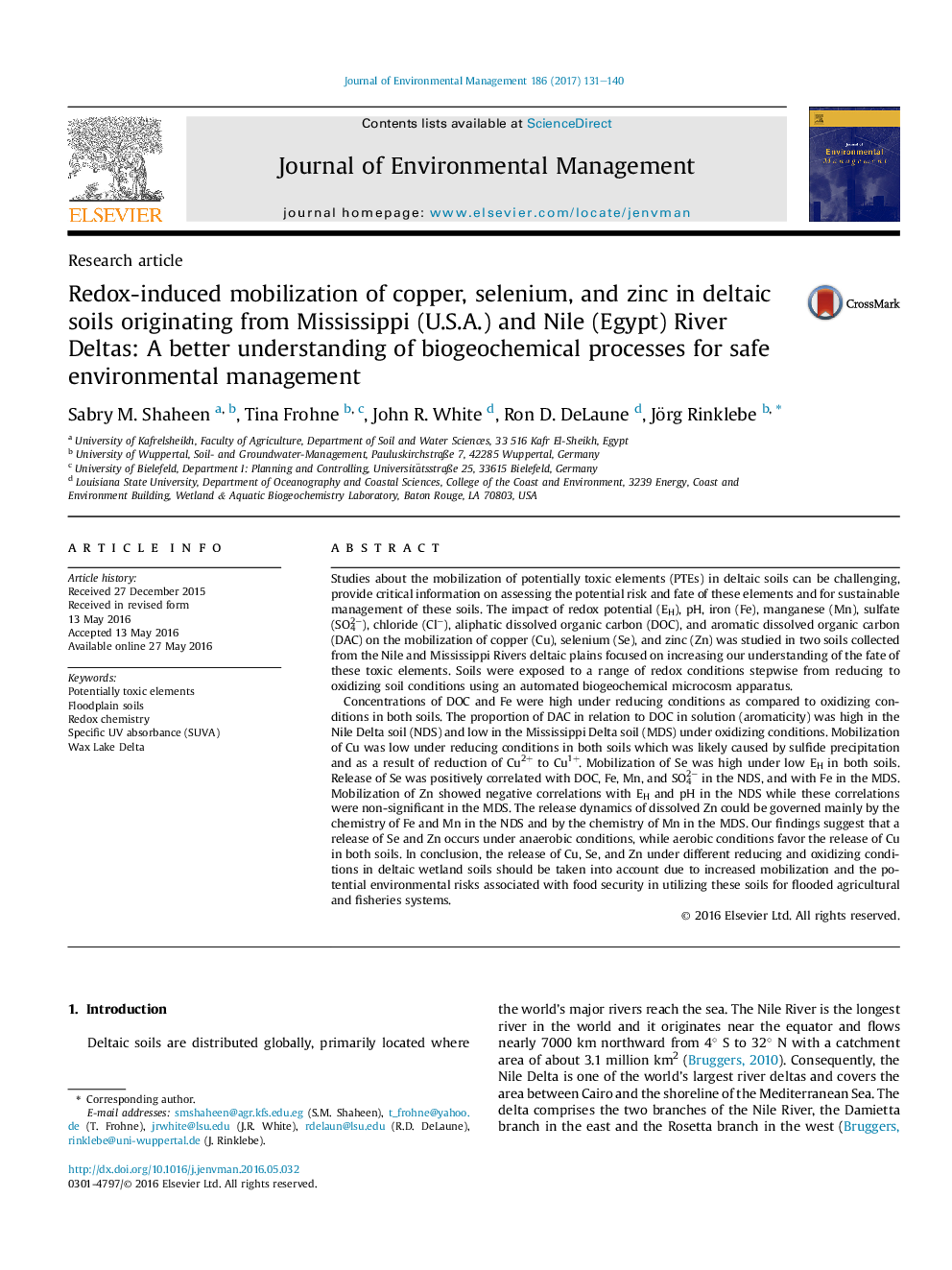| Article ID | Journal | Published Year | Pages | File Type |
|---|---|---|---|---|
| 5117411 | Journal of Environmental Management | 2017 | 10 Pages |
Abstract
Concentrations of DOC and Fe were high under reducing conditions as compared to oxidizing conditions in both soils. The proportion of DAC in relation to DOC in solution (aromaticity) was high in the Nile Delta soil (NDS) and low in the Mississippi Delta soil (MDS) under oxidizing conditions. Mobilization of Cu was low under reducing conditions in both soils which was likely caused by sulfide precipitation and as a result of reduction of Cu2+ to Cu1+. Mobilization of Se was high under low EH in both soils. Release of Se was positively correlated with DOC, Fe, Mn, and SO42â in the NDS, and with Fe in the MDS. Mobilization of Zn showed negative correlations with EH and pH in the NDS while these correlations were non-significant in the MDS. The release dynamics of dissolved Zn could be governed mainly by the chemistry of Fe and Mn in the NDS and by the chemistry of Mn in the MDS. Our findings suggest that a release of Se and Zn occurs under anaerobic conditions, while aerobic conditions favor the release of Cu in both soils. In conclusion, the release of Cu, Se, and Zn under different reducing and oxidizing conditions in deltaic wetland soils should be taken into account due to increased mobilization and the potential environmental risks associated with food security in utilizing these soils for flooded agricultural and fisheries systems.
Related Topics
Physical Sciences and Engineering
Energy
Renewable Energy, Sustainability and the Environment
Authors
Sabry M. Shaheen, Tina Frohne, John R. White, Ron D. DeLaune, Jörg Rinklebe,
